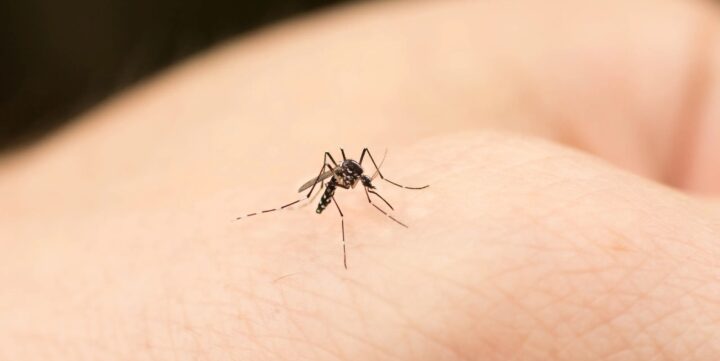New Cases of Japanese Encephalitis Virus in Australia
February 2, 2025
A Growing Public Health Concern in Australia
As summer unfolds across Australia, a growing public health threat demands the attention of healthcare providers: Japanese encephalitis virus (JEV). With cases now reported in New South Wales (NSW), Victoria, and Queensland, healthcare professionals, particularly general practitioners (GPs), must be vigilant.
In 2022, JEV’s reach extended further south than ever before, with initial detections in Victoria and NSW. In 2023, these detections persisted, with viral activity identified in Moree, Griffith, and Narromine Shire in NSW, as well as in northern Victoria along the Murray River.
This season’s first human case in Victoria has left one man in critical condition, underscoring the virus’ potential severity. Meanwhile, in Queensland, a middle-aged man was recently diagnosed after camping in southern Queensland’s Goondiwindi region.
Although most JEV infections are asymptomatic, approximately 1% of cases progress to encephalitis. Of these, the mortality rate ranges from 20–50%, and among survivors, 30–50% experience long-term neurological complications. These statistics highlight the importance of heightened awareness and preparedness among healthcare providers.
Clinical Features and Diagnosis
The clinical presentation of JEV can range from mild febrile illness to severe encephalitis. Early symptoms include fever, headache, nausea, and myalgia. Severe cases may involve drowsiness, confusion, photophobia, cranial nerve pathology, seizures, and even coma. Diagnosing JEV requires a combination of clinical vigilance and laboratory confirmation. Key diagnostic tests include blood serology and PCR (essential for detecting viral presence and antibodies), CSF analysis (helpful for differential diagnosis, particularly to rule out bacterial meningitis and other viral causes), and imaging the review of bilateral thalamic involvement on CT or MRI. Given the complexity of diagnosis, GPs must consider JEV in patients presenting with encephalitis or compatible illnesses, especially those with recent exposure to rural or regional areas.
When considering a diagnosis of Japanese encephalitis virus (JEV), it is crucial to include a range of differential diagnoses, as its symptoms can mimic those of other infectious and non-infectious conditions. Viral encephalitis caused by herpes simplex virus (HSV), varicella-zoster virus (VZV), or enteroviruses should be ruled out, as these are more common and often treatable causes of similar neurological presentations. Other mosquito-borne diseases such as Murray Valley encephalitis virus, West Nile virus, and dengue fever may also present with overlapping symptoms, particularly in regions where these viruses are endemic.
Non-infectious conditions like autoimmune encephalitis, bacterial meningitis, and cerebral malaria should also be considered based on clinical presentation and travel history. Key concerns to monitor include the rapid onset of severe headache, fever, altered mental status, seizures, and focal neurological deficits, as these may signal the progression to acute encephalitis or meningoencephalitis, which requires urgent intervention. Early identification and differentiation from other causes are critical for effective management and prevention of complications.
Vaccination and Preventative Measures
Vaccination remains a cornerstone of JEV prevention. Free vaccines are available for eligible individuals in high-risk areas, including those living near the Murray-Darling Basin, working on farms, or in close contact with pigs—a known amplifier host for the virus. GPs are critical in identifying at-risk populations and ensuring they are vaccinated promptly, in a proactive manner.
Dr. Ken McCroary, a NSW GP, spoke recently with news outlets, emphasising proactive prevention: “Knowing your patient load and targeting those at risk is essential. Our job is prevention—from vaccination to lifestyle advice.” Practical preventive measures involve encouraging individuals to wear loose-fitting, light-colored clothing, use insect repellents, and incorporate permethrin-treated nets or sprays for additional protection. It is also essential to advise patients to eliminate standing water around their homes to minimise mosquito breeding opportunities. Additionally, raising awareness through community education about the risks and symptoms of mosquito-borne illnesses plays a vital role in prevention.
Public Health Notice
GPs are uniquely positioned to act as frontline defenders against JEV. By maintaining awareness, educating patients, and promoting vaccination, they can significantly reduce the virus’ impact. Dr. Will Cross from Victoria’s Goulburn Valley Public Health Unit underscores the importance of preparedness: “We’re at the highest level of risk. GPs must keep JEV in their differentials and ensure communities are well-informed.”
The resurgence of JEV is not an isolated phenomenon. Mosquito-borne diseases such as dengue fever are also re-emerging. For instance, in Townsville, an elderly man was recently hospitalised with dengue fever despite the region’s successful elimination program. These cases underscore the need for robust mosquito control programs and continuous public education.
In Victoria, a comprehensive mosquito surveillance and control program is in place to monitor mosquito populations, test for JEV, and support local councils. However, these measures require community cooperation. Encouraging the public to adopt protective habits and report symptoms promptly is critical.
The ongoing detection of Japanese encephalitis virus (JEV) in southeastern Australia highlights the need for long-term strategies to mitigate its impact. Expanding vaccine accessibility is crucial, requiring efforts to address global supply challenges and ensure broader availability.
Enhancing diagnostic capacity is also essential, with the provision of resources to enable general practitioners and laboratories to perform rapid and accurate diagnoses. Additionally, strengthening public health infrastructure through integrated approaches that link human, animal, and environmental health strategies is vital for effectively managing and reducing the risks associated with the virus.
Reducing the Risk
The Japanese encephalitis virus poses a significant public health challenge in Australia. For healthcare providers, staying informed and proactive is paramount. From recognising symptoms and administering vaccines to educating communities, GPs play a pivotal role in combating this mosquito-borne disease. As Dr. Christian McGrath, Victoria’s Acting Chief Health Officer, advises, “Now is the time for clinicians to be alert and prepared.” Together, communities can mitigate the impact of JEV and safeguard the health of our communities.
Tran Minh Quan, Tran Thi Nhu Thao, Nguyen Manh Duy, Tran Minh Nhat, Hannah Clapham (2020) Estimates of the global burden of Japanese encephalitis and the impact of vaccination from 2000-2015 eLife 9:e51027












